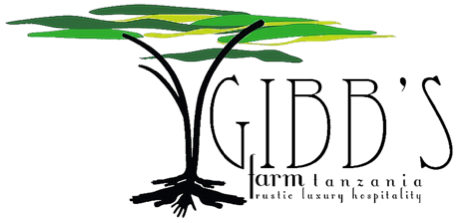The Ecology of Gibb’s Farm






The Living-Museum

We measure our efforts using the Triple TOP Line model.
The concept of the Triple Top Line moves accountability to the beginning of the operations and design process, assigning value to a multiplicity of economic, ecological and social questions that enhance our product’s value. When considered at the start, we can drive intelligent facility and service development and lead to decisions that yield positive effects rather than limited liabilities.
The triple bottom line, a concept developed by John Elkington in 1994, is still a useful tool. Balancing traditional economic goals with social and environmental concerns, in language that works in the boardroom, it created a new measure of enterprise performance. Unfortunately the triple bottom line often becomes a measure of the degree to which a effort has minimised a liability.
Using the Triple Top Line model travel destinations can enhance the well being of nature and culture while generating economic value. Design for the Triple Top Line follows the laws of nature and gives us the tools to develop systems that safely generate prosperity. At Gibb’s Farm these new human systems, materials become food for the soil or flow back to us forever. Value and quality are embodied in products, services and facilities so intelligently designed, they leave footprints to delight in rather than lament.
Is being less bad being good? Perhaps not. “Reuse, reduce, recycle” alone aims for mere sustainability. Minimising the impact of developing a travel destination (a resort or lodge for example) might slow down ecological destruction.
Our approach refines the paradigms of sustainable tourism and “triple bottom line” operation. The Living-Museum model approaches the notion of sustainability from the beginning. “Sustained” tourism is achieved by an active Triple TOP Line approach which combines concept development and operation.
Sustaining rather than sustainable
We set out to pursue something entirely different. It's a strategy that sees today's innovations as the first steps in a transition from the maintenance of an ageing tourist-based system to the creation of a new one. Rather than simply limiting economic growth or reducing our impact, we celebrate the legacy of the historic farm’s foundation which both self regulates and creates positive effects for a large and beneficial ecological footprint: sustaining rather than sustainable.
We approach our business by asking, "How can we grow prosperity, celebrate our community, and enhance the health of all species?" The results are far more positive and enriching than those gained by using less material to make a new product or measuring its performance against a single bottom line standard.
For some eco-tourism and sustainable development have negative connotations. In early examples eco-tourism was an exercise in rationing and doing without. The oxymoron of development and sustainability is also problematic. Our model is different because it reintroduces indigenous life instead of replacing it with something else. It sustains indigenous life through honourable use of the place, indigenous knowledge and educating visitors to appreciate it.
This is a shift from the triple bottom line to the Triple TOP Line.
Summary: The Fractal Triangle
The Triple TOP Line doesn't obviate the need for triple bottom line accounting. Keeping close track of the bottom line is indispensable: We won't achieve sustainability unless we stay in business. In practice, however, triple bottom line accounting tends to focus on economic concerns, with ecological or social benefits sometimes considered as an afterthought. Lost in this scenario are rich opportunities to transform triple bottom line analysis into a strategic design tool generating new business opportunities and triple top line growth.
The McDonaugh Braungart model summarised (note 1) in figure 1, above right, has been applied to the 40-year efforts at Gibb’s Farm. The result remains a work in progress, figure 2, below right. Many of the details presented in the Ecology of Gibb’s Farm web pages are highlighted in the Green Living Project video on the previous page. For example, when preparing food for the traveler or farm community, we asked how can the organically grown food replenish nature, totally eliminate waste, and provide a safe working environment. The result is beautiful and tasty food. It can be expressed in terms of “equality / ecology”.

It has long been recognised that the world is interconnected. Expressed in biological terms as “balance of nature”, “the harmony of the biosphere”, or economic or social terms, every thing whether or not it is designed with environmental health in mind, is produced and used in an interconnected world. This is the fundamental insight of ecology and the reason why of sustainable development is a key focus in the first place. But our value systems often obscure that fact; most of us still in some way identify with one of the prevailing ideologies of the 20th century.
Capitalism, even in a social market economy, identifies value almost exclusively in the economic realm. Yet products designed for economic gain have an enormous impact on the social and ecological world as well. The environmental groups and regulatory efforts that have emerged in response to the unintended consequences of industry tend to identify value primarily in preserving environmental health.
Social movements that see economic aims as threatening are inclined to value the pursuit of equity most highly. Gibb’s Farm has chosen to assess its 40 year sustainability efforts in practical terms, as viewed in context with the contemporary thesis Cradle to Cradle, by McDonaugh and Braugart (2002).
In their text each of these schools of thought -- capitalism, socialism, ecologism -- was inspired by a genuine desire to improve the human condition. But taken to extremes they can neglect factors crucial to long-term success. Holding one of these concerns as the ultimate goal often puts economy, ecology and equity at cross-purposes. So does measuring performance by how well we are managing the bottom line liabilities that arise from these seemingly conflicting interests.



Gibb’s Farm, Harmony Project LLC rights reserved







-
Other Gibb’s Farm web-links:


